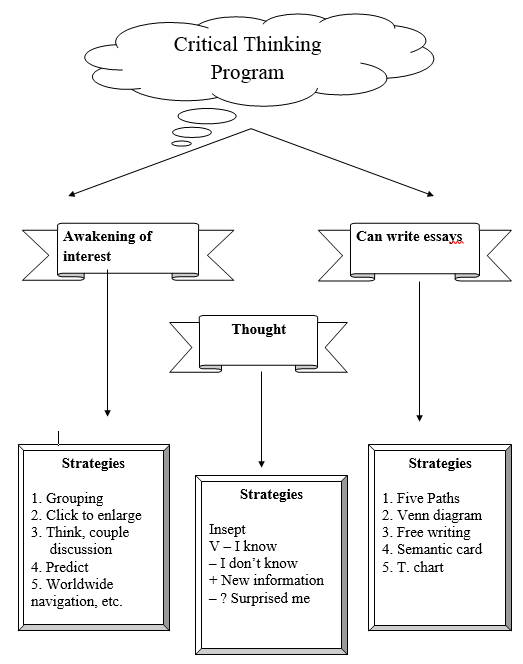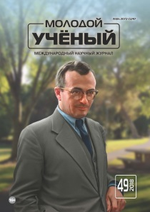A young person likes to see what he is, yet he is curious, enthusiastic, and hands-on. That's why the ability to use visual aids effectively in the classroom plays a major role. Increasing students' interest is a well-organized lesson. That's why every lesson needs to look for new ways of learning, without duplicating the already-known information. Current types of lessons: contest, competition lesson, concert, auction, integration lesson, etc. is giving its results. Especially, using folk pedagogy, the folklore can be used to educate the best traditions of our ancestors. Talking about the kindness, courtesy, the majority of the Kazakh people's speech, it is possible to teach the tradition of absorbing these qualities into a disciple, respecting the elder, caring for the young, and keeping up with the ethics [1].
It is also important to create a problem situation in the classroom in order to increase student interest in the subject. By solving the problem, the student's thinking ability will be strengthened and he will be able to solve any problem. Special attention to these lessons is the special relationship between teacher and student. In this case, the teacher increases the student's creativity, as the cognitive act is a collective act of organizing action. The interest of every student in the field of studying is that not only it will work actively with the students who are good at the lesson, but also create the most favorable conditions for the development of the whole child and the ability to work in the field.
In order to develop student abilities, we need to use new information technology. At the creative level, the pupil independently analyzes the phenomenon and tries to conduct research in small scientific creativity. Its main purpose are:
‒ to form cognitive tasks of pupils;
‒ to improve creative abilities and excitement;
‒ to awaken the interest to the knowledge
For this purpose, students can focus on each topic in each section — writing proverbs, writing essays, and writing poems to their favorite characters.

There are many ways in which the student will be interested in the subject. One of the important points is that the critical thinking development technology of George Soros Institute of Public Societies, which has been launched through the Soros Foundation — Kazakhstan, has increased the interest of students to study. Critical Thinking — Not Trial, Thoughtful Thought. If the student is properly organized, he / she will be able to succeed in the development of his / her level of development and achieve certain success. The Critical Thinking Program is designed to stimulate interest, to sense meaning, to think, and so forth. stages. The program includes «Five Paths», «Venn diagram», «Free writing», «Discussion in pairs» [2] methods. Critical thinking can help to increase the student's cognitive activity, interest in the lesson, create self-education, creativity, teach the lessons interesting and easy, teach pupils to work together with the team, and increase the depth and accuracy of knowledge. The main purpose of the lesson is to arouse the student's interest in the subject and on the topic. There must be a special understanding between the teacher and the student. It is a good idea for a teacher to keep the student aloof and to give the student the ability to reason on the game. Usually a lot of teachers do not speak a loud, silent pupil. Keeps you ignored. Most of the time, he focuses on a good student. It is important to keep in mind that from the first day of class, they should be able to read and write correctly. If it detects the shortcomings, it is necessary to work smoothly until they get into the line.
The teaching process is a combination of knowledge that you already know and new knowledge. The student complements new concepts, and adds new knowledge to his old knowledge. Therefore, the lesson is about what the student is discussing or what he or she can say. This can be accomplished through excitation, awakening, and irritation through the brain's crust [3].
The second objective of interest is to increase the activity of the learner. Because learning is undoubtedly an action requiring more activity than passive. The student remembers what he knows, writes on paper. Shares with a neighbor, discusses in the group. That is, his thoughts are disclosed, he cleanses, by speaking, sharing, and discussing. Gradually, the thought begins to grow. At this stage the pupil collects information about new knowledge and combines it with the old knowledge.
Small stories have a special place in the interest of the elementary school students. So it is useful for kids to use fairy tales and proverbs, brainteasers (puzzles) and tongue twisters.
In the math lesson, try to gain the ability to think in numerical methods. Special attention should be paid to the mathematical dictation's text to the compilation of the report's terms and conclusions. Working with pictures, I try to use the distributed card to effectively apply the former skills.
In the mother tongue lesson is a schematic scheme, a new technology — level work, a touch, a method and an effective use of games.
In extracurricular work, it is usually paid close attention to national traditions, customs. It is also planned to involve family members gradually.
References:
- N.Nazarbayev “Our people need to adapt to new life”.// “Egemen Kazakhstan”. May 31, 2000.
- B. A. Turgynbayeva “Advanced training technologies”. Almaty 2000.
- B. A. Turgynbayeva “Teaching creativity”. Almaty 2007.







